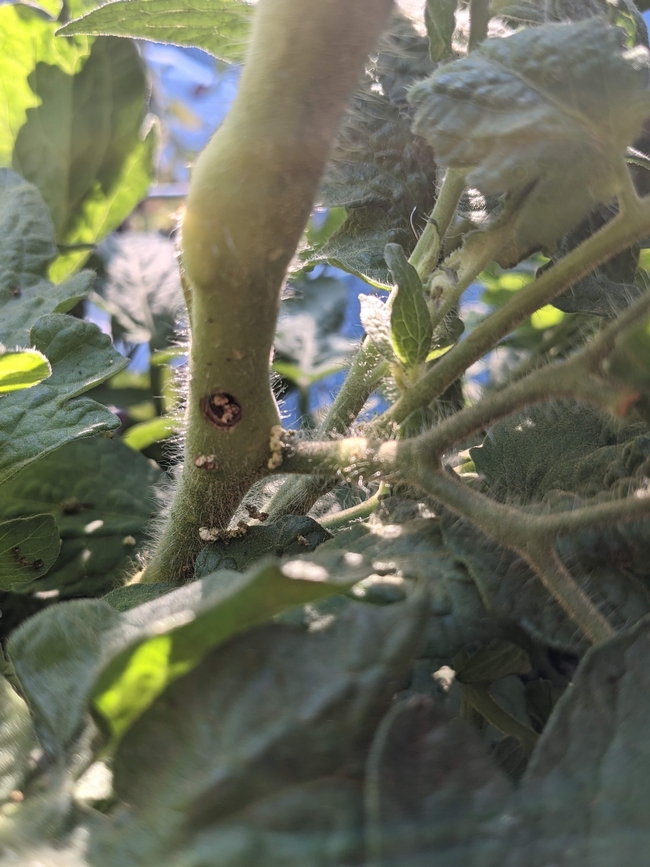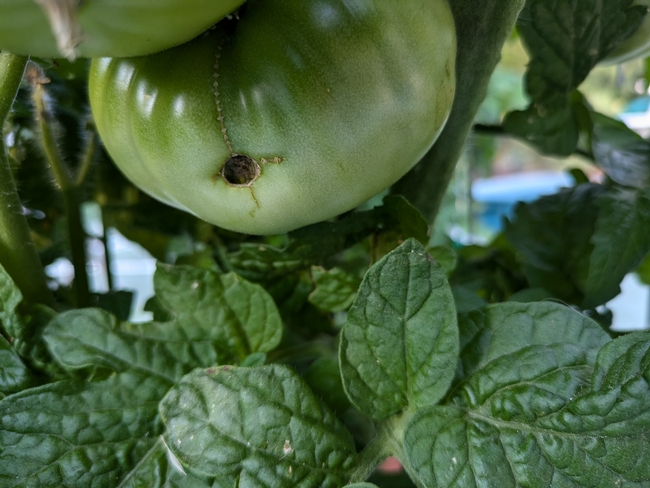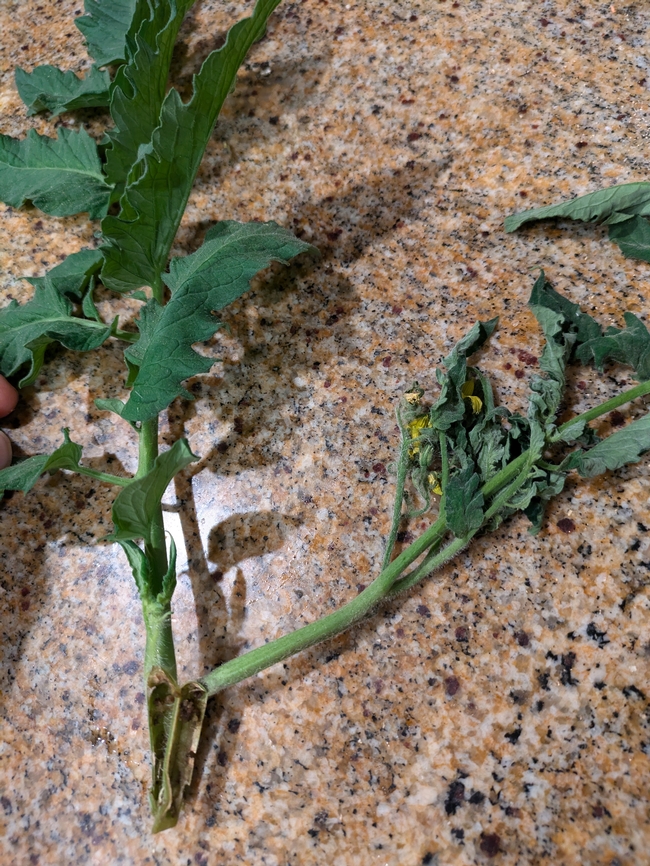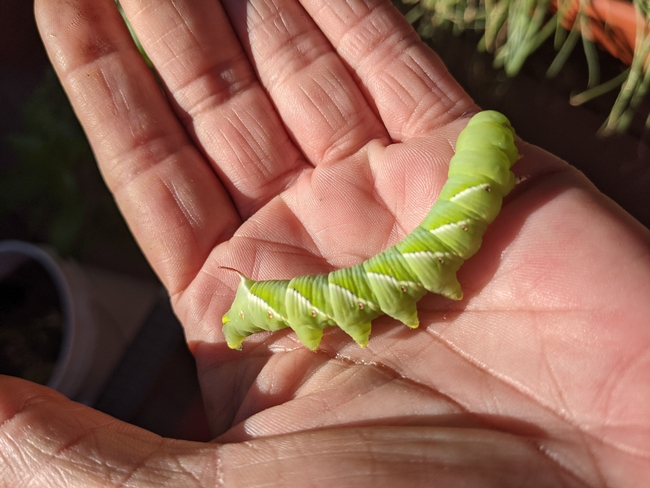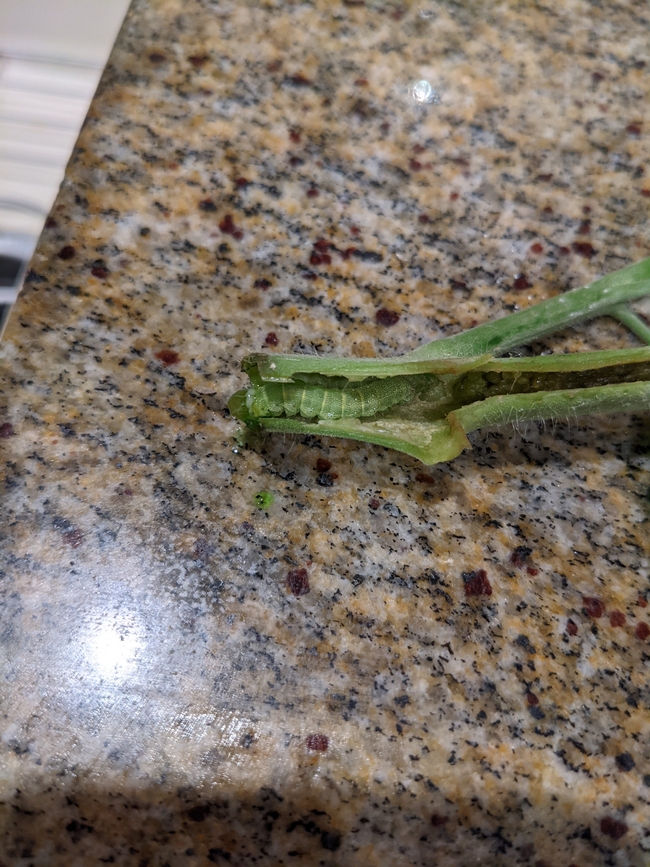- Author: Nanelle Jones-Sullivan
The victims:
In late June, wilting was observed above one stem near the top of the tomato plant. On closer inspection, a hole was bored below the wilting in a single stem and a hole in a nearby tomato.
The autopsy:
Evidence of tunneling and “frass” or caterpillar waste.
The suspects:
They both eat many things and have many aliases.
From the Clemson University Cooperative Extension Service:
“Fruit worms feed on tomato leaves and fruit. Distorted leaves often result when they feed upon the tips of the leaves in the developing bud. Larvae may also bore into stalks or midribs. When fruit is present, larvae enter it soon after hatching. They prefer green fruit and will enter it usually at the stem end, causing extensive direct damage and promoting decay.”
“Hornworms strip leaves from tomato vines. If a heavy infestation develops, these caterpillars also feed on developing fruit. Rather than bore into the fruit, they feed on the surface, leaving large, open scars. Fruit damage, however, is much less common than loss of leaves.”
The verdict: Tomato Fruit Worms
Mechanical control- hand-picking
Biological Control. Beneficial insects Trichogramma spp. (egg parasites), the larval parasite, Hyposoter exiguae, and predators such as Big-Eyed Bug, and Minute Pirate bug. Biological controls also include sprays of Bacillus thuriengiensis and Spinosad.


